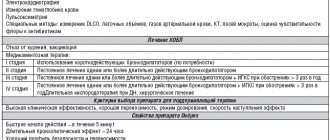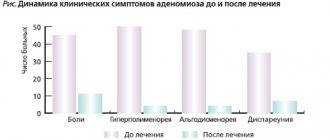Sibri Breezhaler caps d/ingal+device 50 µg N30 (Novartis)
For inhalation use only! The drug Sibri Breezhaler is a capsule with powder for inhalation, which should only be used for inhalation through the mouth using a special device for Breezhaler inhalation, which is included in the package. The drug cannot be taken orally. Capsules with powder for inhalation should be stored in a blister and removed from it immediately before use. The recommended dose of Sibri Breezhaler is 50 mcg (contents of 1 capsule) once a day. Inhalation of the drug is carried out daily, once a day at the same time. If an inhalation is missed, the next dose should be taken as quickly as possible. Patients should be instructed not to take more than 1 dose of the drug (50 mcg) per day. If Sibri Breezhaler is prescribed, patients should be instructed on the correct use of the inhaler. Use in patients with renal failure In patients with mild to moderate renal failure, the recommended dose of Sibri Breezhaler can be used. In patients with severe renal failure or end-stage renal disease requiring hemodialysis, Sibri Breezhaler should be used at the recommended dose only if the expected benefit outweighs the potential risk. Use in patients with hepatic insufficiency No specific clinical studies have been conducted in patients with hepatic insufficiency. Sibri Breezhaler is eliminated primarily by renal excretion and therefore a significant increase in exposure is not expected in patients with hepatic impairment. In patients with impaired liver function, the recommended dose of Sibri Breezhaler may be used. Use in elderly patients Sibri Breezhaler can be used at the recommended dose in patients aged 75 years and older. Directions for use Each package of Sibri Breezhaler contains: - One inhalation device - Breezhaler - Blisters with capsules with powder for inhalation Capsules with powder for inhalation cannot be taken orally! The Breezhaler inhalation device contained in the package is intended for use only with drug capsules. For inhalation of the capsules contained in the package, only the Breezhaler inhalation device is used. Do not use the drug capsules with any other inhalation device and, in turn, do not use Breezhaler for inhalation of other drugs. After 30 days of use, Breezhaler should be discarded. How to use the inhaler. Remove the cover. Open Breezhaler. To open the inhaler, grasp it firmly by the base and tilt the mouthpiece. Prepare the capsule: Separate one blister from the blister pack by tearing it off along the perforation. Take one blister and remove the protective film from it to release the capsule. Do not squeeze the capsule through the protective film. Remove capsule: Capsules should be stored in the blister and only removed immediately before use. Dry your hands and remove the capsule from the blister. Do not swallow the capsule. Insert the capsule into the Breezhaler: Place the capsule into the capsule chamber. Never place the capsule directly into the mouthpiece. Close the Breezhaler: Close the inhaler tightly. When it closes completely, there should be a “click” sound. Pierce the capsule: Hold the Breezhaler in an upright position with the mouthpiece pointing upward. Press both buttons all the way down at the same time. When the capsule is pierced, a “click” should be heard. Do not press the buttons to pierce the capsule more than once. Completely release the Breezhaler inhaler buttons on both sides. Exhale: Exhale completely before inserting the mouthpiece into your mouth. Never blow into the mouthpiece. Inhale the medicine: - Hold the Breezhaler in your hand so that the buttons are on the left and right (not top and bottom), as shown in the picture. — Place the mouthpiece of the Breezhaler inhaler in your mouth and squeeze your lips tightly around it. - Take a quick, even, as deep breath as possible. Do not press the buttons on the lancing device. Please note: When you inhale through the inhaler, you should hear a characteristic rattling sound created by the rotation of the capsule in the chamber and the spraying of the powder. You may feel a sweetish taste of the drug in your mouth. If you do not hear a rattling sound, the capsule may be stuck in the inhaler chamber. If this occurs, open the inhaler and gently release the capsule by tapping the base of the device. To release the capsule, do not press the buttons to pierce the capsule. If necessary, repeat steps 9 and 10. Hold your breath: If you hear a characteristic sound when inhaling, hold your breath as long as possible (so as not to experience discomfort), and at the same time remove the mouthpiece from your mouth. After this, exhale. Open the Breezhaler and see if there is any powder left in the capsule. If there is any powder left in the capsule, close the Breezhaler and repeat steps 9-12. Most people can empty the capsule in one or two inhalations. Some people experience a cough for a short time after inhaling the drug. If you are coughing, don't worry. If there is no powder left in the capsule, it means you have received the full dose of the drug. Remove the capsule: After you have taken your daily dose of Sibri Breezhaler, tilt the mouthpiece, remove the empty capsule by tapping the inhaler and discard it. Close the mouthpiece of the Breezhaler inhaler and close the Breezhaler cap. Do not store capsules in the Breezhaler inhaler. Do not swallow capsules containing inhalation powder. Use only Breezhaler contained in the package. Capsules should be stored in a blister and removed immediately before use. Never insert a capsule into the mouthpiece of the Breezhaler inhaler. Do not press the lancing device more than once. Never blow into the mouthpiece of the Breezhaler inhaler. Always roll the capsule before inhalation. Do not wash Breezhaler. Keep it dry. See the section “How to clean the Breezhaler”. Do not disassemble Breezhaler. When starting a new package of the drug, always use the new Breezhaler contained in the package for inhalation of capsules. Do not store capsules in the Breezhaler inhaler. Always store blisters containing capsules and Breezhaler in a dry place. Additional information In very rare cases, a small amount of the contents of the capsules may enter the mouth. Don't worry if you inhale or swallow it. Please note that if you puncture the capsule more than once, the risk of it breaking increases. How to clean the Breezhaler Clean the Breezhaler once a week. Wipe the inside and outside of the mouthpiece with a clean, dry cloth. Never use water to clean the Breezhaler inhaler. Keep it dry.
Release form and composition
Sibri Breezhaler is produced in the form of capsules with powder for inhalation: size No. 3, hard; the body and lid are transparent, orange, with a black stripe and an inscription in black ink: on the body - “GPL50” above the black stripe, on the lid there is a marking in the form of the company logo under the black stripe; the contents of the capsules are almost white or white powder [6 or 10 pcs. in a blister, in a cardboard box 1, 2, 3, 4 or 5 blisters complete with an inhalation device (Brizhaler); multipack: 15/25 packs of 1 blister, 3 packs of 3/5 blisters or 4 packs of 4 blisters with Breezhaler in a cardboard box, as well as instructions for use of Sibri Breezhaler].
1 capsule contains:
- active ingredient: glycopyrronium base – 50 mcg (equivalent to glycopyrronium bromide in the amount of 63 mcg);
- additional substances: magnesium stearate, lactose monohydrate;
- capsule shell: sodium chloride, carrageenan, water, hypromellose, Sunset yellow dye; black ink – propylene glycol, shellac, sodium hydroxide, black iron oxide dye.
Use during pregnancy and lactation
During preclinical studies, no teratogenic effect was recorded after inhalation administration of Sibri Breezhaler capsules. Since there is no data on its use in pregnant women, prescribing the drug during pregnancy is possible only if the expected benefit of therapy for the patient significantly outweighs the possible threat to the fetus.
It is unknown whether glycopyrronium bromide is excreted in human milk, so the use of Sibri Breezhaler during breastfeeding should only be considered if the benefit to the woman outweighs any likely risk to the infant.
Animal studies, including reproductive toxicity studies, do not suggest that the drug may affect fertility in women or men.
Side effects
The frequency of occurrence of adverse reactions of Sibri Breezhaler is assessed according to the following criteria: often - from > 1/100 to < 1/10; uncommon – from > 1/1000 to < 1/100:
- metabolism and nutritional disorders: infrequently – hyperglycemia;
- infectious and parasitic diseases: often – nasopharyngitis; uncommon – cystitis, rhinitis;
- nervous system and psyche: often – headache, insomnia; infrequently – hypoesthesia;
- respiratory system, chest organs and mediastinum: infrequently - pharyngeal irritation, congestion in the paranasal sinuses, nosebleeds, productive cough;
- heart: infrequently – palpitations, atrial fibrillation;
- skin and subcutaneous tissues: uncommon – skin rash;
- digestive system: often – dry mouth, gastroenteritis; uncommon – dental caries, dyspepsia;
- kidneys and urinary tract: often – urinary tract infection; uncommon – urinary retention, dysuria;
- musculoskeletal and connective tissue: infrequently - musculoskeletal pain in the chest area, pain in the extremities;
- general disorders: infrequently – asthenia, fatigue.
In a clinical study lasting 12 months, the following additional undesirable effects were identified, which were more common when using Sibri Breezhaler compared to placebo: vomiting, nasopharyngitis, neck pain, muscle pain, diabetes mellitus.
Violations recorded during post-registration studies and according to literature data:
- organs of the chest and mediastinum: paradoxical bronchospasm;
- skin and subcutaneous tissues: skin itching;
- immune system: hypersensitivity, angioedema.
In patients over 75 years of age, the incidence of headaches and urinary tract infections with Sibri Breezhaler was higher than in the placebo group.
Drug interactions
- other drugs for inhalation containing m-anticholinergics: these interactions have not been studied, and therefore the combined use of these drugs with glycopyrronium bromide is contraindicated;
- indacaterol, β2-adrenergic receptor agonist (for inhalation use): no effect on the pharmacokinetics of this substance and glycopyrronium bromide was noted;
- drugs widely used for the treatment of COPD, including methylxanthines, beta-agonists, glucocorticosteroids for oral and inhaled use: clinically significant manifestations of drug interactions were not recorded when Sibri Breezhaler was combined with these drugs in clinical practice;
- cimetidine and other organic cation transporter inhibitors that affect the renal clearance of glycopyrronium bromide: in healthy volunteers during clinical studies, the AUC of glycopyrronium bromide increased by 22% and renal clearance decreased by 23% when used concomitantly with cimetidine; When combining the drug with these substances, no clinically significant interaction is expected.
Based on the results of in vitro studies, Sibri Breezhaler is not expected to affect the metabolism of other drugs.
Inhibition/induction of the metabolic transformation of glycopyrronium bromide does not cause significant changes in the systemic exposure of the drug.
For impaired renal function
In patients with COPD and mild/moderate renal impairment (GFR ≥ 30 ml/min/1.73 m²), Sibri Breezhaler can be used in recommended doses.
In the presence of severe renal failure (GFR < 30 ml/min/1.73 m²) or end-stage renal disease requiring hemodialysis treatment, the drug can be used at the recommended dose only when the expected benefit significantly outweighs the potential risk. Patients from this risk group should be closely monitored in order to promptly detect the occurrence of possible undesirable effects.
special instructions
Sibri Breezhaler is not intended for the relief of acute episodes of bronchospasm.
After using the drug, cases of immediate hypersensitivity reactions have been reported. If signs indicating the development of an allergic reaction appear, including skin rash, hives, angioedema (difficulty swallowing or breathing, swelling of the lips, tongue and face), you should immediately stop using Sibri Breezhaler and find alternative therapy.
During drug treatment, as well as during other inhalation therapy, the development of paradoxical bronchospasm, which is life-threatening, may occur. If this complication occurs, you must immediately stop using the drug and begin alternative therapy.
It is also necessary to urgently discontinue the inhalation agent and consult a doctor if any sign or symptom of acute angle-closure glaucoma develops.
Sibri Breezhaler capsules are recommended for the maintenance treatment of patients with COPD. Since patients over 40 years of age significantly predominate in the general COPD population, when using the drug in patients under 40 years of age, it is necessary to confirm the diagnosis of COPD using spirometry.
Impact on the ability to drive vehicles and complex mechanisms
Sibri Breezhaler does not have a negative effect on the ability to drive vehicles and other moving complex mechanisms.
Contraindications
Absolute:
- age under 18 years;
- combined use with inhaled drugs containing other m-anticholinergic agents;
- glucose-galactose malabsorption, lactase deficiency, galactose intolerance (the product contains lactose);
- hypersensitivity to any of the components of Sibri Breezhaler.
Relative (glycopyrronium bromide should be used with caution):
- severe renal failure - glomerular filtration rate (GFR) less than 30 ml/min/1.73 m², including end-stage renal failure requiring hemodialysis;
- diseases leading to urinary retention;
- angle-closure glaucoma;
- unstable coronary heart disease (CHD);
- heart rhythm disturbances;
- prolongation of the QTc interval (QT corrected > 0.44 s);
- history of myocardial infarction.
Pharmacological properties
Pharmacodynamics
Sibri Breezhaler is a long-acting inhalation agent. Glycopyrronium bromide, the active substance of the drug, is an m-anticholinergic blocker that blocks the bronchoconstrictor effect of acetylcholine on the smooth muscle cells of the respiratory tract, which causes a bronchodilator effect. Five types of muscarinic receptors (M1–5) have been found in the human body. It has been established that only species M1–3 take part in the physiological function of the respiratory system. Glycopyrronium bromide, which is an antagonist of muscarinic receptors, is characterized by high affinity predominantly for receptors of the M1–3 types. Along with this, the active substance has 4–5 times greater sensitivity to the M1 and M3 receptor subtypes compared to the M2 subtype. This leads to the rapid development of a therapeutic effect after inhalation of glycopyrronium bromide, which is confirmed by the results of clinical studies.
The duration of action of a drug after inhalation is associated with the prolonged retention of its therapeutic concentration in the lungs, as evidenced by a longer half-life (T½) after inhalation use compared with intravenous (IV) administration. Numerous clinical studies have demonstrated that when patients with chronic obstructive pulmonary disease (COPD) were treated with glycopyrronium bromide, they experienced significant improvements in pulmonary function as measured by changes in forced expiratory volume in 1 minute (FEV1).
The therapeutic effect of the active substance is observed within the first 5 minutes after inhalation administration with a significant increase in FEV1 from the initial values ranging from 0.091 to 0.094 l, a bronchodilator effect is observed after inhalation for over 24 hours. According to research data, there was no evidence of the development of tachyphylaxis due to the bronchodilator effect of glycopyrronium bromide during its regular use up to 52 weeks. There were also no changes in heart rate (HR) and the duration of the QTc interval during therapy with Sibri Breezhaler at a dose of 200 mcg in patients with COPD.
Pharmacokinetics
After inhalation use, glycopyrronium bromide is intensively absorbed into the systemic circulation, the maximum concentration (Cmax) in the blood plasma is observed after 5 minutes, the absolute bioavailability is approximately 40%. Approximately 10% of the total systemic exposure of the drug (AUC) is due to absorption in the gastrointestinal tract (GIT) and 90% is due to absorption in the lungs.
When administered orally, the absolute bioavailability of glycopyrronium bromide is estimated at 5%. With regular inhalations once a day, the equilibrium state of the active substance can be achieved within 7 days. In this condition (taking 50 mcg once a day), the Cmax of glycopyrronium bromide and its plasma concentration in the blood immediately before the next dose are 166 and 8 pg/ml, respectively. Elimination in urine at steady state when compared with the first inhalation allows us to assume that administration in the dose range of 25–200 mcg does not affect the systemic accumulation of the drug.
After intravenous administration of glycopyrronium bromide, the volume of distribution (Vd) at steady state (Vss) and in the terminal phase (Vz) was 83 and 376 l, respectively. The apparent Vz after inhalation (Vz/F) was 7310 L, indicating a slower excretion of the drug after inhalation. In in vitro studies, the binding of the active substance to plasma proteins was 38–41% at a content level of 1–10 ng/ml. These levels are at least 6 times higher than those in the equilibrium state observed in plasma when using the drug once a day, 50 mcg.
It has been established that as a result of hydroxylation of glycopyrronium bromide, various mono- and bis-hydroxylated metabolites are formed, and due to direct hydrolysis, carboxylic acid derivatives (M9) are formed. In vitro studies noted that CYP isoenzymes are involved in the oxidative biotransformation of the active substance. It is assumed that hydrolysis to M9 is catalyzed by enzymes from the cholinesterase family. Since in vitro studies have not revealed the metabolism of glycopyrronium bromide in the lungs and M9 contributes only slightly to the circulation (4% of Cmax and AUC of the active substance) after intravenous administration, it is believed that M9 is formed from absorbed from the gastrointestinal tract (after inhalation) fractions of the substance through presystemic hydrolysis and/or during the initial passage through the liver. After IV or inhalation administration, only minimal amounts of M9 were detected in the urine (less than 0.5% of the initial dose).
During repeated inhalations, glucuronic conjugates and/or glycopyrronium bromide sulfates were detected in urine in amounts approximately 3% of the dose. An in vitro inhibition study showed that glycopyrronium bromide did not exhibit significant activity in inhibiting the isoenzymes CYP2A6, CYP1A2, CYP2C9, CYP2C8, CYP2D6, CYP2E1, CYP2C19 or CYP3A4/5, the transporters MRP2, MXR, MDR1 and the transporters OCT1, OCT2, OAT1, OAT3, OATP1B1 or OATP1B3.
Excretion of the active substance by the kidneys reaches 60–70% of the total plasma clearance, the remaining amount (30–40%) is excreted in the bile or as a result of metabolic transformation. After single and repeated inhaled administrations of Sibri Breezhaler 1 time per day in a dose range from 50 to 200 mcg to healthy volunteers and patients with COPD, the average renal clearance was in the range of 17.4–24.4 l/h. Active tubular (tubular) secretion promotes the elimination of glycopyrronium bromide by the kidneys; almost 20% of the received dose is detected unchanged in the urine. The concentration of the active substance in plasma decreases in several phases. The mean terminal half-life is longer after inhalation use (33–57 hours), compared with that after intravenous injection (6.2 hours) and oral administration (2.8 hours). Based on the nature of elimination, prolonged absorption of glycopyrronium bromide in the lungs and/or its penetration into the systemic circulation can be assumed for 24 hours or more after inhalation.
Systemic exposure, as well as total urinary elimination of glycopyrronium bromide at steady state in patients with COPD increased proportionally to the dose in the range from 50 to 200 mcg.
Population pharmacokinetic analysis of data in patients with COPD has established that body weight and age are factors influencing interindividual differences in systemic drug exposure. Sibri Breezhaler at a dose of 50 mcg once a day can be safely used in all age groups and at any body weight.
Systemic exposure to glycopyrronium bromide is not significantly affected by gender, smoking status, or baseline FEV1.
Systemic exposure to glycopyrronium bromide is influenced by renal function. A moderate increase in AUC of up to 1.4 times was observed in the presence of mild/moderate renal impairment and an increase of up to 2.2 times in severe or end-stage renal impairment.
Patients with liver dysfunction did not participate in clinical studies. Because glycopyrronium bromide is eliminated primarily by the kidney, impairment of hepatic metabolism is not likely to cause a clinically significant increase in systemic exposure.
Overdose
The use of glycopyrronium in high doses may cause the development of symptoms associated with m-anticholinergic activity and require appropriate symptomatic treatment.
In patients with COPD, regular inhalations of Sibri Breezhaler in a total dose of 100 and 200 mcg once a day for 28 days were well tolerated. In blood plasma after intravenous administration of glycopyrronium bromide at a dose of 150 mcg (equivalent to glycopyrronium at a dose of 120 mcg), the Cmax and AUC of the drug in healthy volunteers were approximately 50 and 6 times higher, respectively, than the plasma Cmax and AUC at steady state. observed when using Sibri Breezhaler inhaled at a dose of 50 mcg once a day. There were no symptoms of overdose in this case.
Acute intoxication due to accidental oral ingestion of capsules is unlikely due to the low oral bioavailability of glycopyrronium bromide (about 5%).



